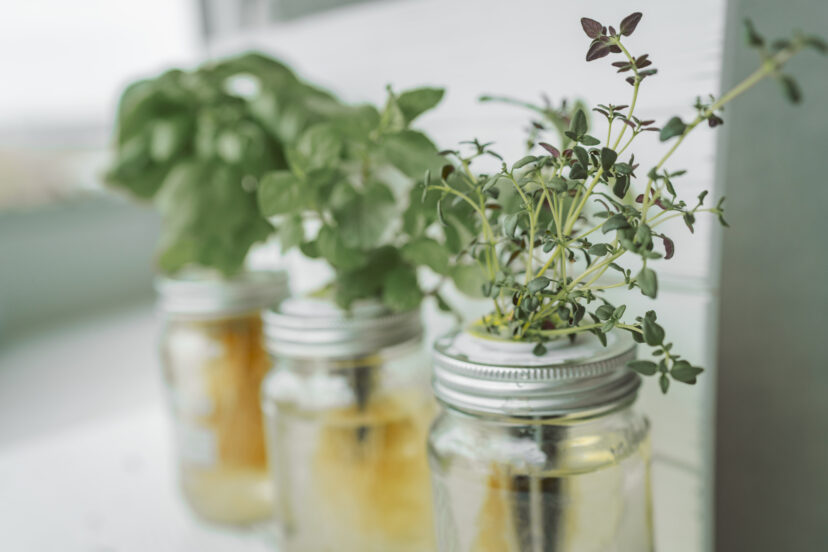Kratky Jar: A Comprehensive Guide
Understanding the Basics of Kratky Jar
What exactly is a Kratky jar? The Kratky jar is a simple way to implement the Kratky method of hydroponics. Named after Dr. Bernard Kratky, this method of hydroponic gardening involves growing plants in a nutrient-rich solution without the need for aeration or electricity. It’s a passive system, meaning once you set it up, the plants do most of the work.
The Kratky method originated as an innovative solution to grow plants in areas with limited resources. Its ease of use and low-tech approach have made it a favorite among beginners and seasoned gardeners alike.
Setting Up Your Kratky Jar System
Setting up your Kratky jar is straightforward. You’ll need a container – anything from a mason jar to a larger bucket, depending on the size of your plant. Selecting suitable plants is crucial; leafy greens like lettuce and herbs work best. For your nutrient solution, a balanced, water-soluble fertilizer will suffice. The key is to fill the container with enough solution to submerge the roots initially, allowing space for air as the water level drops and roots grow.
Advantages of the Kratky Jar Method
Simplicity and Low Maintenance
One of the greatest appeals of the Kratky jar is its simplicity. It’s perfect for beginners because it doesn’t require complex equipment or constant monitoring. This low-maintenance approach is also a time-saver, allowing gardeners to focus on other tasks while their plants grow.
Cost-Effectiveness and Sustainability
The Kratky method is not only budget-friendly but also eco-friendly. It uses less water than traditional gardening methods and doesn’t require electricity, reducing both your costs and environmental footprint.
Challenges and Solutions in Kratky Jar Gardening
Dealing with Common Issues
Algae growth can be a problem in Kratky jars, especially if they’re exposed to direct sunlight. Painting the outside of your jars or wrapping them in foil can help prevent this. Nutrient deficiencies are another common issue, but they can be easily managed by using a well-balanced nutrient solution and monitoring your plants’ growth.
Advanced Tips for Successful Kratky Gardening
Regularly checking your plants’ health and adjusting the nutrient solution as needed will optimize their growth. It’s also important to understand that not all plants are suitable for the Kratky method, so selecting the right varieties is key.
Real-World Applications and Success Stories
Case Studies of Kratky Jar Gardening
I’ve seen remarkable success stories from individuals and communities who’ve adopted the Kratky method. From personal kitchen gardens to educational projects in schools, this method has proven its value in various settings.
Conclusion
Summarizing the Kratky Jar Journey
The Kratky jar method stands out for its simplicity, cost-effectiveness, and sustainability. Whether you’re a beginner or an experienced gardener, it offers an accessible path to successful hydroponic gardening.
Future Prospects and Continued Learning
As we continue to explore and refine hydroponic methods like the Kratky jar, the potential for innovation and improved efficiency is immense. I encourage everyone to experiment and share their experiences, contributing to the collective knowledge of this fascinating field.
FAQs
What plants are best suited for the Kratky method?
Leafy greens and herbs are ideal for the Kratky method due to their low nutrient and space requirements. Lettuce, kale, spinach, basil, and mint are some great examples. These plants typically do well in the static water environment of a Kratky jar.
How do I prevent algae growth in my Kratky jar?
Algae thrive in sunlight and nutrient-rich environments. To prevent their growth, cover your containers with an opaque material like paint or wrap them in aluminum foil. This blocks light, discouraging algae without affecting your plant’s growth.
Can I reuse the nutrient solution in my Kratky jar?
It’s not recommended to reuse the nutrient solution from one plant to another due to the risk of spreading diseases and the imbalance of nutrients that occurs as plants consume them. It’s best to start with a fresh solution for each new plant.
How do I know if my plants are getting enough nutrients?
Look for signs of healthy growth: vibrant green leaves and steady growth are good indicators. Nutrient deficiencies often manifest as discoloration or stunted growth. If you notice these signs, adjust your nutrient solution concentration or change it altogether.
Is the Kratky method suitable for large-scale gardening?
While the Kratky method is excellent for small-scale or personal gardening, scaling it up requires more space and resources. It can be used for larger operations, but careful planning is needed to manage multiple containers and ensure consistent nutrient and water levels.
“




